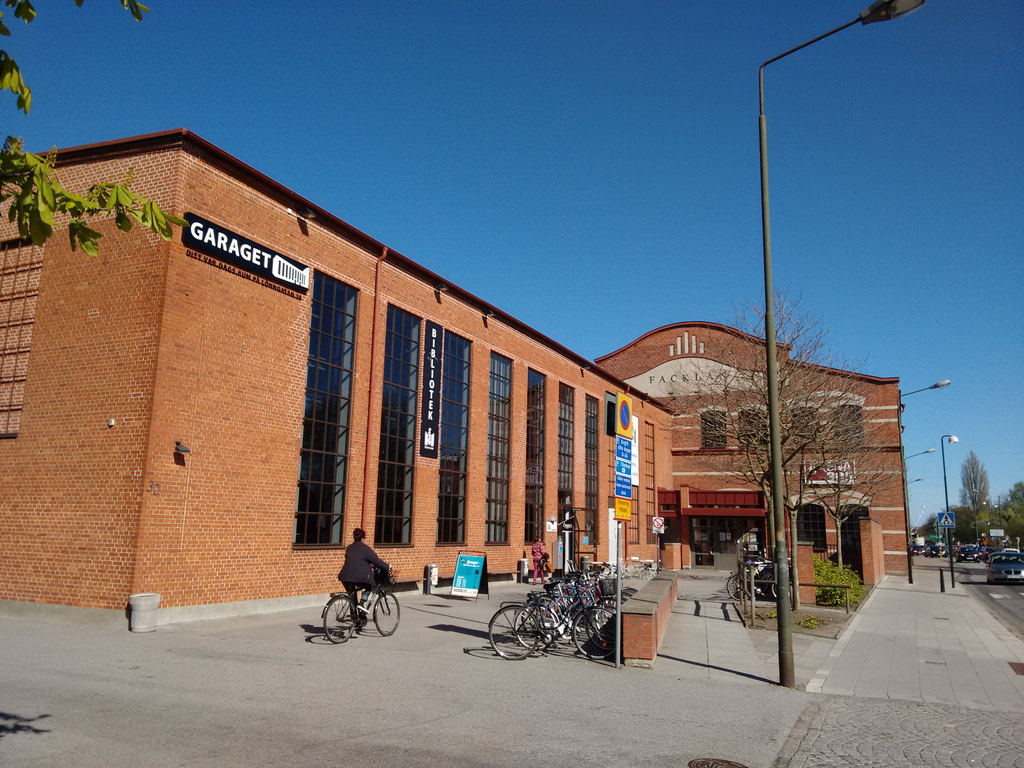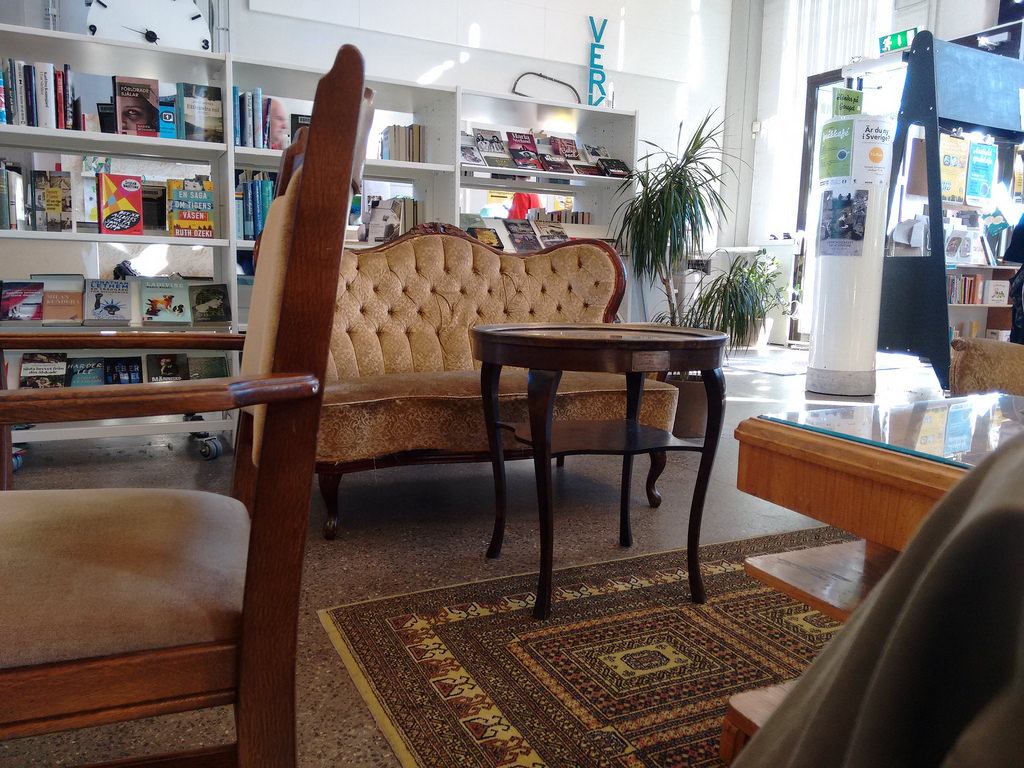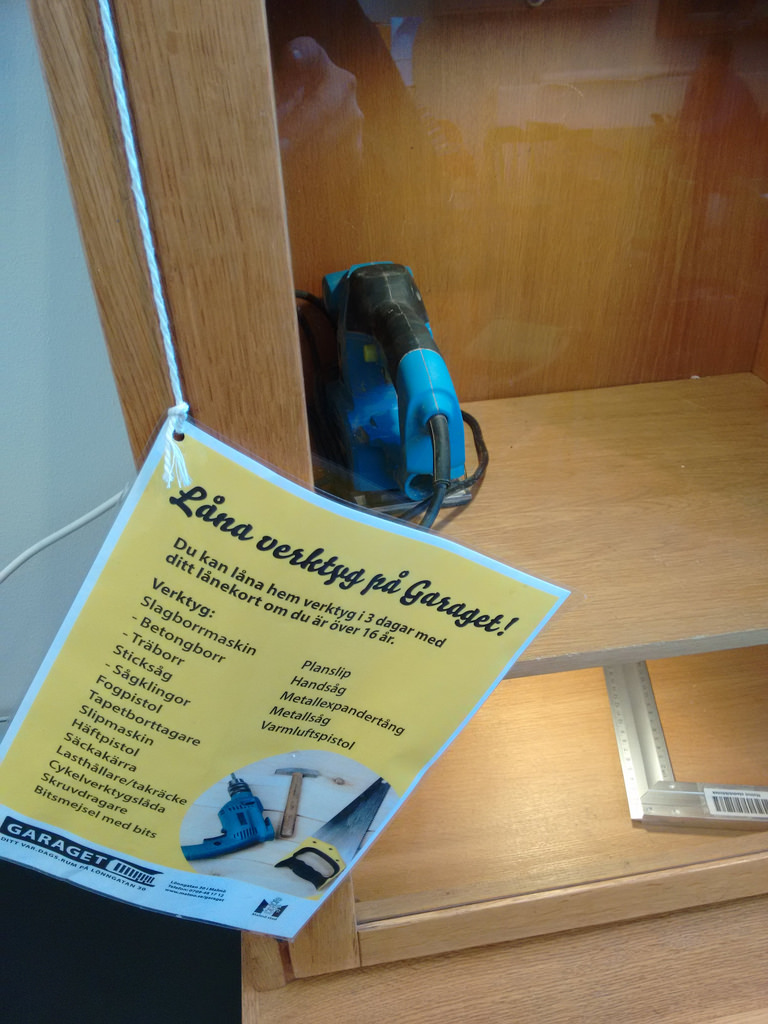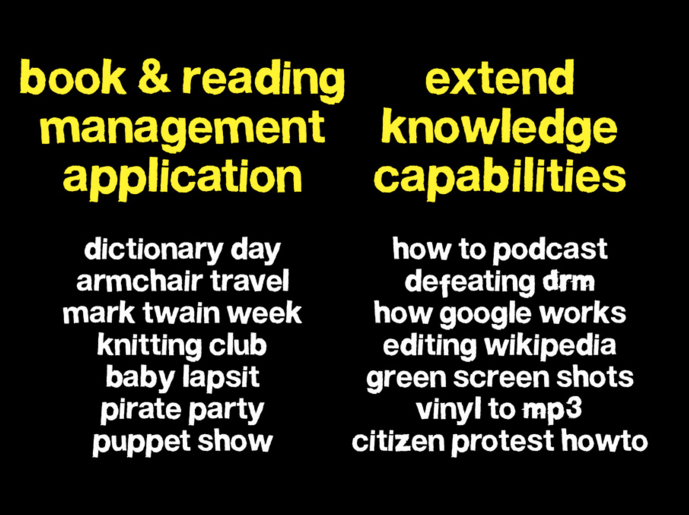Three years ago, at Alibis for Interaction here in Malmö, I met Andreas Ingefjord, who told me about Garaget, a library, community centre, meeting place, and café he managed the creation of. A 2009 article in Scandinavian Library Quarterly describes the spirit of the facility well:
When Garaget opened it was more or less empty. Different activities should, it was thought, develop naturally and not be presented as a finished product. Garaget is a continually ongoing process. Subsequently, a great deal of effort has been devoted to meeting the requests and needs of patrons. One of the first objectives was to find furnishings that allowed Garaget to be flexible and open to change and at the same time be regarded as homely and inviting.We decided to use antique furniture to establish a cosy feeling and at the same time accede to requests that we be ecologically aware. The library was provided with bookshelves on wheels so that they could be easily moved as needed. A part of Garaget has floors of sprung parquet so that dancing, gymnastics and other physical activities can be performed without the risk of knee injuries. Movable walls in the form of screens on wheels and flexible curtain walls make the creation of rooms within rooms possible without preventing the production of larger events. The foundation for an ‘open workshop’ has been laid: handicrafts and simpler activities can now be worked on in a corner of Garaget; we supply tools, equipment and space and our patrons supply the material and the ideas. Garaget has even invested in technical solutions such as a film projector and sound and lighting systems. This is the way we always try to work in Garaget. Everything we do should increase usability and flexibility and be based on the real needs of patrons.
Yesterday, with a free afternoon in Malmö, I had a chance to visit Garaget for the first time and experience this spirit for myself.


Garaget does a remarkably good job at simply being a library, in the traditional sense: it has a broad collection of interesting books, in multiple languages, displayed invitingly as one might in a bookstore. I spent a pleasant hour reading a David Byrne book on music and a Ben Goldacre book about bad science. There are newspapers and magazines and graphic novels and guides to the city and books about Garaget itself.
There’s also a tool library, where you can borrow anything from an electric sander to a caulking gun:

What’s most remarkable about Garaget, however, is that it is a library that has been debugged to remove typical barriers to true engagement of its community:
Anyone wanting to do something in Garaget has entirely free hands. Furniture can be freely arranged as long as it’s put back afterwards, and all of our equipment is at the disposal of patrons. Garaget costs nothing to use and in certain cases we can even assist with event financing if the activity in question is relevant for others. Employees are there for support when needed but, with rare exceptions, do not organize events.Many activities take place outside of ordinary opening hours and those organizing these activities are responsible for the premises. This means Garaget is accessible 24 hours a day, 7 days a week.
Anyone with experience with library bureaucracy will recognize how challenging it must have been to defy the institutional inertia to allow a philosophy like this to live. In my 2009 talk at the Access conference I talked about libraries as a “book and reading management application” vs. libraries as a tool to “extend knowledge capabilities,” and about how libraries do more of the former because that’s the kind of application that runs on the traditional library operating system:

Garaget is living example of a place that’s managed to upgrade the library operating system to take on a much broader, expansive role for what the library can be; it truly is an enhancement to the neighbourhood’s knowledge capabilities.
It’s a model we would all do well to follow.
 I am
I am
Comments
I was reading your blogpost
I was reading your blogpost thinking that sounds like a cool space to visit, only to realize when I saw the picture of the interior, I already hád visited it, in November 2009. I was visiting an EU Ministerial conference, and in Garaget there was sort of an alternative program going on. It was where I had the most engaging conversations of the conference. The alternative program was sort-of officially recognized, and the Swedish minister hosting the conference also visited the Garaget. I remember the cool space, but forgot the name.
Add new comment